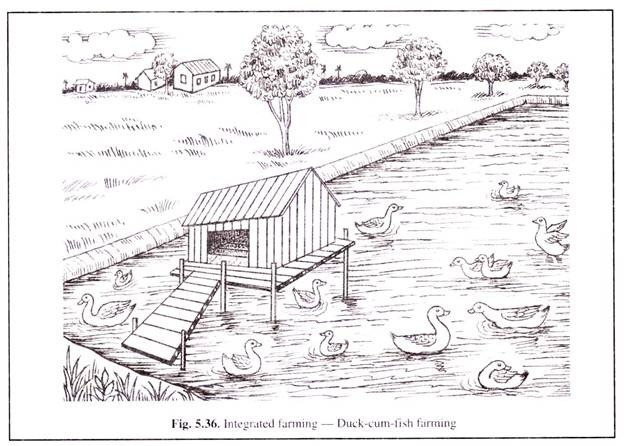The following points highlight the three methods by which ducks can be reared. The methods are: 1. Intensive System 2. Semi-Intensive System 3. Free Range System.
Method # 1. Intensive System:
Under intensive system ducks are reared on deep litter till they attain the age of 16 weeks. A confined space of 3 sq. ft. per bird is allowed. As the ducklings become 17 weeks old, they are vaccinated against duck plague and given more space, about 5 sq. ft per duck.
Ducklings grow at a very fast rate and, therefore, require a ration, rich in all nutrients. Khaki Campbell duck consumes about 12.5 kg of feed up to 20 weeks of age. Afterwards the consumption varies from 120-170 gm per bird per day depending upon the rate of production and availability of greens.
The starter, growers and layers ration should contain a protein percentage of 21, 18 and 18 respectively with a metabolisable energy (ME) of 2850, 2900 and 2800 kcal per kg of feed, respectively.
Method # 2. Semi-Intensive System:
ADVERTISEMENTS:
Under semi-intensive system (Fig. 5.36) birds are grown on deep litter with floor space of 2 sq. ft in high shelter and 10 sq. ft as outside run till they attain an age of 16 weeks. For feeding of wet mash, ‘V’ shaped feeders can be used. A 4-inch space on the hopper for feeding is suitable.
Under semi-intensive system local feeds are also made use off. One third of the meal ration may be replaced by cheaper vegetable feeds, household scrapes and fodders as available under local conditions.
Method # 3. Free Range System:
In free range systems, ducklings are provided ample space for run and night shelter. Under this system a flock of 2000 ducks can be reared per acre (0.0456 hectare). Ducks on free range system obtain most of their protein by foraging small fishes, crustaceans and insects.
